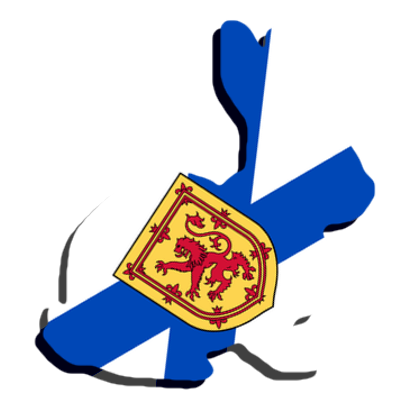Bluenoser Bunnies & The St. John’s Skyline
It may be hard to believe, but rabbits are not native to Newfoundland.
It maybe equally hard to believe, but the almost ubiqutious long-earred animals that most Newfoundlanders call rabbits aren’t even rabbits at all.
They are snowshoe hare.
Splitting Hares
Snowshoe Hare. (NPS Photo/Jacob W. Frank), Public Domain
These days the island of Newfoundland is home to two species of hare — the arctic hare and the snowshoe hare.
The arctic hare is native to Newfoundland and the population on the island is actually the southernmost in all of North America. Despite being native to the island, the population of arctic hare is not widespread, at least not in large numbers. Most sightings are in the higher elevations of the Long Range Mountains and the interior plateaus of the central and western parts of the island.
-
Rabbits and hare are alike in a lot of ways — like long ears and hopping. They are different in some important ways too. Hares tend to be bigger than rabbits, have even longer ears and bigger hind legs. Rabbits live in nests/dens but hare don’t. Baby rabbits are born fairly helpless while baby hare are born ready to run — their eyes are open and they can move shortly after birth.
Read more about rabbits and hare in the NL Governments Our Wildlife publication.
The non-native snowshoe hare is much more common and can be found across the island. It’s become an important game species and in years of high density, more than a million animals can be harvested. That’s not too bad for a species that’s only called the island home for about 150 years.
Rendell Recommends Rabbits
Hon. Stephen Rendell, Public Domain.
The story of Newfoundland’s rabbits (aka snowshoe hare) starts with Stephen Rendell.
Rendell was born in Devonshire, England in 1819. He came to Newfoundland when he was 15 years old to work with Job Bros. & Co as a clerk. He worked in Hant’s Harbour where he be came very popular among the citizens of Trinity Bay. He married Catharine Norris, the daughter of a Wesleyan minister and eventually became MHA for Trinity.
Rendell was an avid outdoorsmen with a keen interest in Newfoundland wildlife. He became the chair of the Agricultural Society in St. John’s and it was while occupying this post that Rendell’s thought turned to rabbits (aka snowshoe hare).
Rendell believed that the snowshoe hare would be successful in Newfoundland and could prove to be a valuable addition to the island’s somewhat limited collection of mammal species.
In the 1860s Rendell decided to put his idea into action. He purchased a few hare in Halifax, put them in a crate and had them transported by schooner to the island. No one was sure they’d survive the trip but, when the hare hopped into St. John’s harbour, Rendell knew he could push forward with his idea.
Over the next 4 years, more than 30 crates of 90-100 hare were brought from Nova Scotia to Newfoundland. The crates were distributed to magistrates across the island, where they were taken into the woods and released.
For the next 10 years, residents were asked to “refrain from shooting or otherwise injuring or molesting” the hare (at least that’s how the Book of Newfoundland puts it). The hare were allowed to go forth and do as rabbits do — multiply.
Hare can have two or more litters a year so by 1879, the density of snowshoe hare was high enough to allow hunting. Today the rabbit/showshoe hare is one of Newfoundland’s most important game animals with as many as 30 000 people participating in the hunt…
And a whole lot of happy lynx joining in too.
Lynx were a relatively rare animal in Newfoundland prior to the introduction of snowshoe hare. The abundance of tasty new prey caused the island’s lynx population to swell, so Rendell not only gave Newfoundlanders one brand new animal, he greatly increased the abundance of our native wildcat.
Rendell and George Street United
Introducing the snowshoe hare to Newfoundland left a pretty big mark on the island but that’s not the only mark Stephan Rendell left on the island.
At about the same time Rendell was introducing rabbits he was making a mark on the St. John’s skyline.
Rendell was active in the local Methodist church. So much so, that on May 27th, 1872 he laid the cornerstone for George Street United Church. It was an honour he probably deserved — Rendell donated the stone the church is built from, which was quarried from the Southside Hills.
Stephan Rendell died in 1893 — well over a century ago. His time on the island left a mark that can still be seen — whether you’re strolling downtown St. John’s or hiking the trails of Terra Nova National Park. Thats an impressive legacy really — and a pretty cool piece of trivia:
What do rabbits and George Street have in common? Stephen Rendell
-
Snowshoe Hare, NL Dept of Fisheries, Forestry and Agriculture.
26 Noble Men, Book of Newfoundland
Stephen Rendell, Book of Newfoundland




